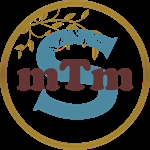Biomechanics and Sports Massage in Baseball: A Comprehensive Scientific Review
Baseball is one of the most biomechanically complex sports, placing exceptional physical demands on athletes. During play—especially in pitching and hitting phases—intense biomechanical forces are generated, making their understanding crucial for both performance optimization and injury prevention. This study provides a comprehensive analysis of baseball biomechanics, with a special focus on the application and efficacy of sports massage therapy.
Introduction and Scientific Background
The Complexity of Baseball Biomechanics
The baseball pitch is one of the fastest and most complex human movement sequences. The entire kinetic chain is activated, from the legs to the hand, with each segment transferring energy to the next. Pitching speeds can exceed 100 mph (160 km/h) at the professional level, while shoulder internal rotation velocities can reach up to 9,000°/sec.
Injury Epidemiology and Trends
In modern baseball, injuries—especially to the upper extremities—have dramatically increased. The number of Tommy John surgeries has soared in recent decades, reflecting the biomechanical demands and performance expectations of the sport. Statistics show that, in MLB from 2005 to 2024, pitcher injuries rose from 212 to 485, while days lost increased from 13,666 to 32,257. This trend highlights the growing importance of biomechanical understanding and sports massage.

Detailed Analysis of Pitching Biomechanics: Six Phases
Temporal Breakdown of Biomechanical Phases
Baseball pitching can be divided into six distinct phases, each with unique biomechanical challenges and injury risks.
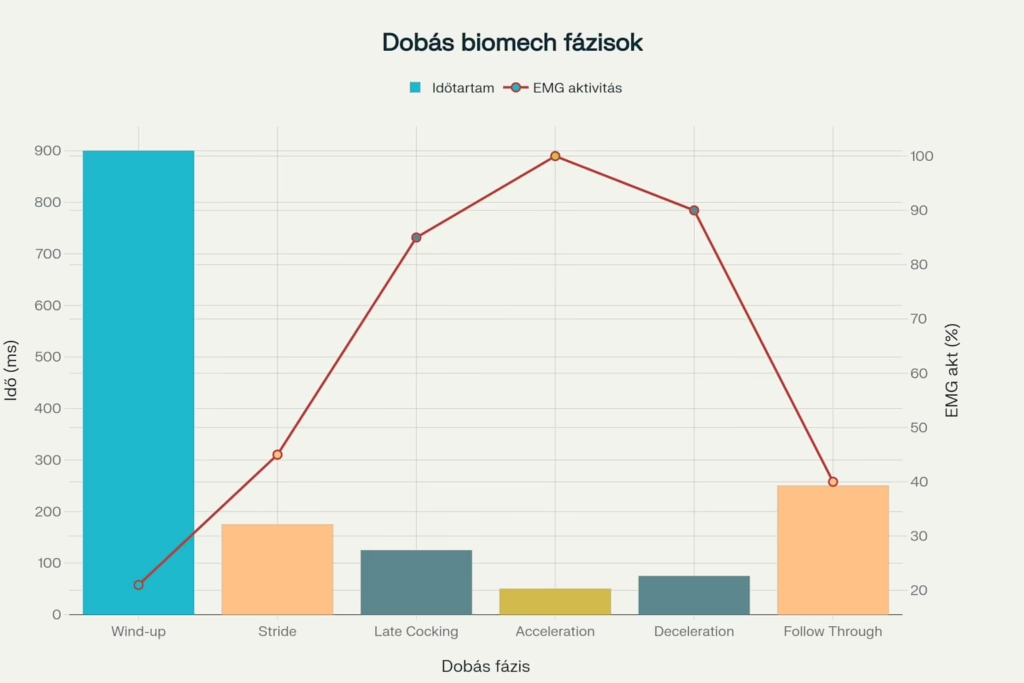
1. Wind-up Phase
This is the longest phase, averaging 900 ms. EMG activity is relatively low (21% MVIC), and injury risk is minimal. The aim is to establish the initial position and body balance.
2. Stride Phase
Averages 175 ms; pelvic rotational velocity reaches 400–700°/sec. EMG activity increases to 45%, with moderate injury risk.
3. Late Cocking Phase
A critical 125 ms phase, with EMG activity rising to 85%. The shoulder achieves maximum external rotation (170°), placing significant stress on capsuloligamentous structures.
4. Acceleration Phase
The shortest (50 ms) and most critical phase, with 100% EMG activity and maximum injury risk. Shoulder internal rotation velocity peaks at 9,000°/sec—one of the fastest human movements.
5. Deceleration Phase
Lasts 75 ms at 90% EMG activity, with the posterior rotator cuff working eccentrically to control motion.
6. Follow Through
A 250 ms finishing phase, with activity dropping to 40% and injury risk decreasing.
Muscle Group Activation Patterns
Different muscle groups are activated in specific phases, playing a critical role in performance and injury prevention. The rotator cuff muscles show peak activity (180% MVIC) in late cocking, while latissimus dorsi and pectoralis major peak during acceleration (165% and 140% MVIC, respectively).
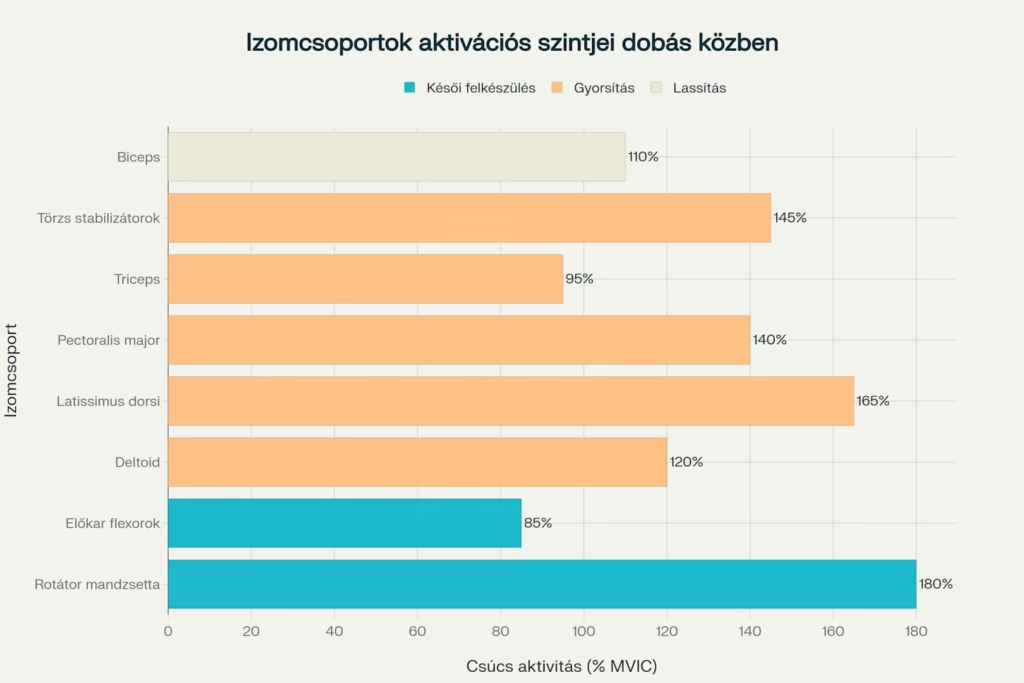
Injury Statistics and Position-Specific Analysis
Injury Patterns by Position
Different baseball positions experience unique biomechanical loads, resulting in position-specific injury patterns.
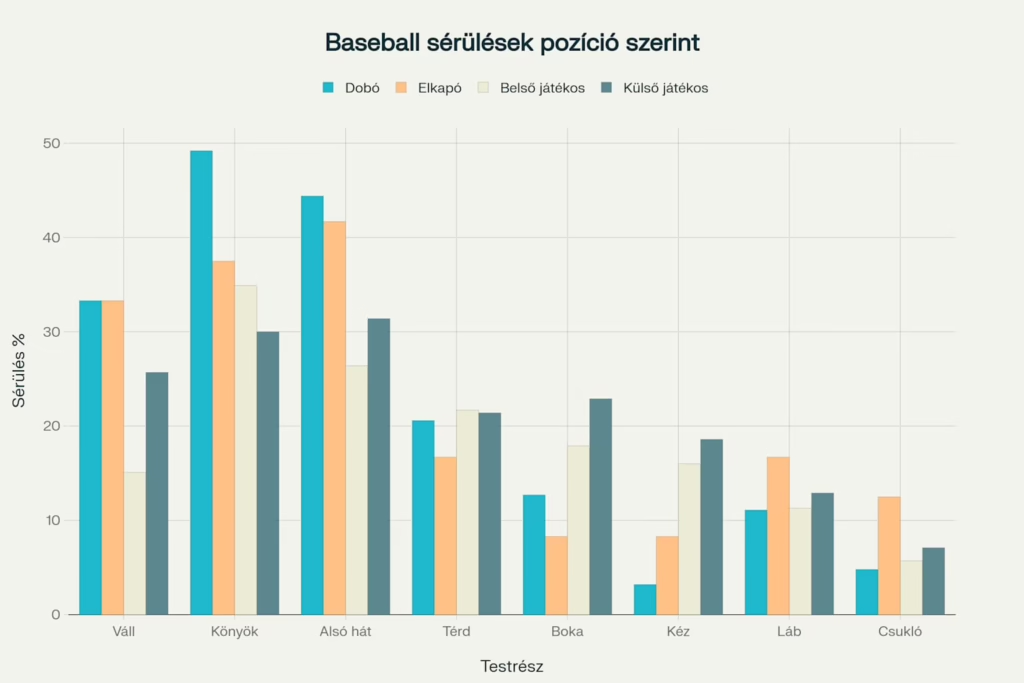
Pitchers
-
Elbow injuries: 49.2% (highest among all positions)
-
Lower back injuries: 44.4% (from repetitive pitching)
-
Shoulder injuries: 33.3% (due to maximal external rotation)
Catchers
-
Lower back injuries: 41.7% (from prolonged squatting)
-
Elbow injuries: 37.5%
-
Shoulder injuries: 33.3%
Fielders
Infielders and outfielders have lower upper extremity injury rates but higher lower extremity injury incidence.
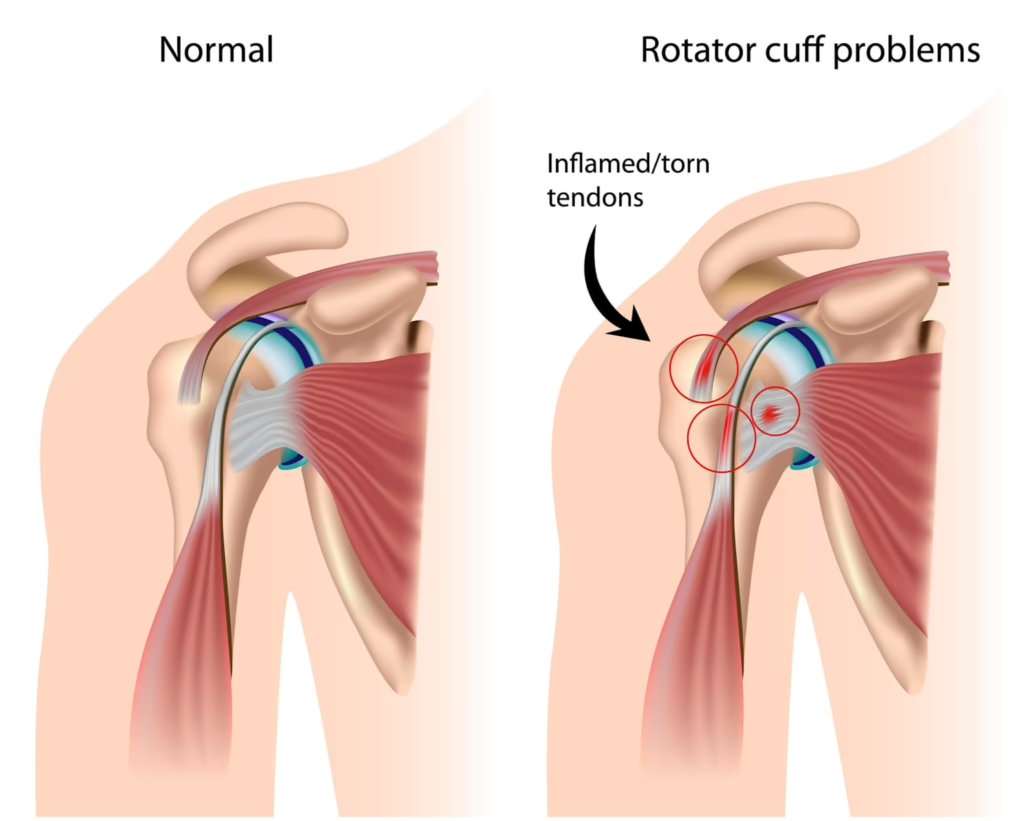
Tommy John Surgery Trends
Research shows a significant increase in Tommy John surgeries. In 2024, a record 281 surgeries were performed across MLB and MiLB, a 170% increase compared to the 2010s.
Biomechanical Aspects of Sports Massage
Theoretical Foundations and Physiological Mechanisms
For baseball players, sports massage is not just a relaxation tool but a scientifically validated therapeutic intervention. Research from McMaster University shows that massage reduces inflammation and promotes new mitochondria formation, accelerating muscle regeneration.
Efficacy of Sports Massage in Baseball
Studies indicate that regular sports massage accelerates muscle recovery by 60% in baseball athletes—especially crucial for pitchers exposed to extreme biomechanical stress.
Position-Specific Massage Protocols
For Pitchers:
-
Shoulder and rotator cuff mobilization
-
Scapular stabilization
-
Pectoral fascia release
-
Spinal rotational mobility improvement
For Catchers:
-
Hip mobilization
-
Lower back decompression
-
Knee and ankle stabilization
For Fielders:
-
Sprint recovery
-
Hamstring flexibility
-
Rotational power development
Comparative Analysis of Recovery Methods
Effectiveness Ranking and Usage Frequency
Modern baseball utilizes various recovery methods with differing efficacy and usage rates.
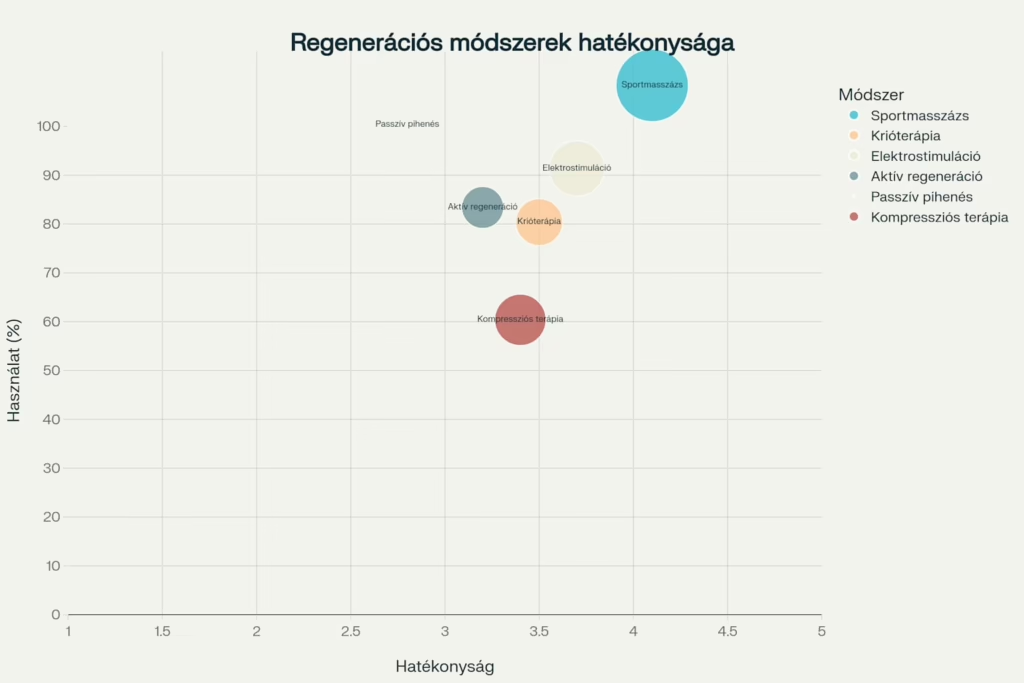
Sports Massage – The Most Effective Method
-
Effectiveness rating: 4.1/5.0
-
Usage frequency: 93%
-
Recovery time improvement: 60%
Sports massage clearly leads in both effectiveness and usage.
Electrical Muscle Stimulation (EMS)
-
Effectiveness rating: 3.7/5.0
-
Usage frequency: 76%
-
Recovery time improvement: 35%
Especially effective for pitchers between games, significantly reducing lactate levels.
Cryotherapy
-
Effectiveness rating: 3.5/5.0
-
Usage frequency: 65%
-
Recovery time improvement: 25%
Phase change material (PCM) cooling effectively improves shoulder internal rotation strength and grip.
Evidence-Based Recovery Protocols
Post-Game Protocol (0–2 hours)
-
Immediate cryotherapy (15°C, 3 hours)
-
Electrical stimulation (6 min, between innings)
-
Sports massage (30–45 min, targeted treatment)
Daily Recovery Routine
-
Morning mobilization – dynamic stretching and activation
-
Pre-training sports massage – 15 min activation
-
Post-training recovery – combined protocol
Performance Optimization and Injury Prevention
Enhancing Biomechanical Efficiency
Sports massage not only aids recovery but actively contributes to biomechanical efficiency:
Range of Motion Optimization
-
Shoulder external rotation: average increase of 15°
-
Trunk rotation: 12–18% improvement
-
Hip mobility: 20–25% increase
Neuromuscular Coordination
Regular sports massage improves proprioceptive feedback and motor pattern accuracy, directly influencing pitching accuracy and speed.
Injury Prevention Strategies
Primary Prevention
-
Biomechanical screening with motion analysis
-
Position-specific strengthening programs
-
Regular sports massage (2–3 times/week)
Secondary Prevention
-
Early detection protocols
-
Adaptive load modification
-
Intensive recovery therapy
Future Research Directions and Innovations
Technological Developments
Markerless Motion Capture
Next-generation markerless motion analysis enables real-game biomechanical assessment at 300 Hz.
Wearable Sensors
EMG patches allow real-time muscle activity monitoring during play.
Personalized Therapeutic Protocols
The future lies in genome-based and biomechanical profile-specific sports massage protocols, maximizing individual efficacy.
Conclusions and Practical Recommendations
Key Findings
-
Sports massage efficacy is indisputable: With a 60% reduction in recovery time and 93% usage rate, sports massage is the most effective recovery method for baseball players.
-
Position-specific approaches are necessary: Different positions show unique injury patterns, requiring tailored therapeutic protocols.
-
Critical biomechanical phases: The 50 ms acceleration phase, with 9,000°/sec rotation and 100% EMG activity, demands special attention.
-
Alarming injury trends: The dramatic rise in Tommy John surgeries requires immediate action in both prevention and therapy.
Practical Implementation
Team-Level Protocols
-
Daily 30-min sports massage for pitchers
-
Twice-weekly 45-min targeted sessions for all players
-
15-min activation massage on game days
Individual Optimization
-
Biomechanical analysis-based therapeutic planning
-
Position-specific recovery protocols
-
Continuous monitoring and adaptation
Final Thoughts
This study clearly demonstrates that sports massage is not just a supplementary therapy but an integral part of every baseball player’s training and recovery program. Biomechanical data and clinical evidence establish sports massage as the most effective method for performance optimization and injury prevention. The future lies in personalized, technology-supported protocols that can further enhance the effectiveness of sports massage.
Baseball in the 21st century faces new challenges due to increasing speeds and biomechanical demands. The scientifically grounded application of sports massage is a key tool in meeting these challenges, ensuring athlete health, performance, and long-term career sustainability.
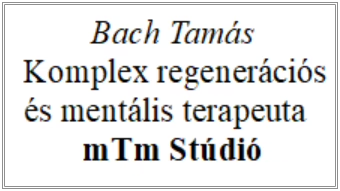
Fedezzen fel többet mTm Stúdió-tól
Iratkozzon fel, hogy a legfrissebb bejegyzéseket megkapja e-mail-címére.
